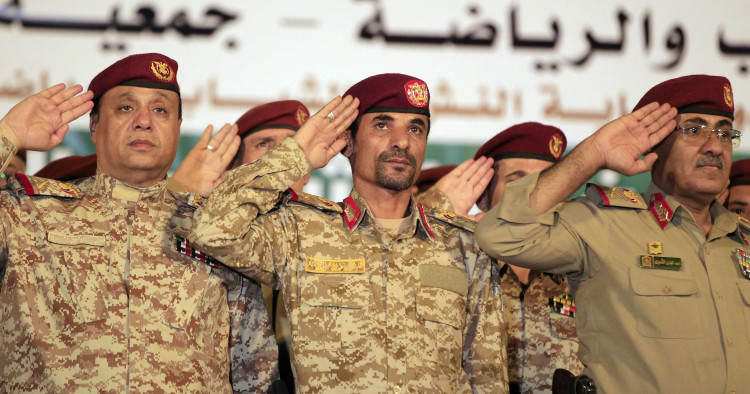Sept. 21, 2022, marked the eighth anniversary of the Houthis’ takeover of Sana’a, Yemen’s capital, under the pretext of fighting corruption and poverty. But what initially was presented as a struggle against injustice ended up being nothing more than a power grab masquerading as a rebellion. Since 2014, most of northern Yemen has become isolated after the Houthis alienated their opponents and executed their one-time ally, former President Ali Abdullah Saleh, shattering trust in the possibility of future alliances with their movement. Throughout the war, the country has undergone a radical political, religious, and cultural makeover, partially overturning the Yemeni Republic and opening a new chapter as a theological state presided over by a religious leader, Abdul Malek al-Houthi.
The shock of the seizure of Sana’a never truly wore off for many Yemenis, who at first assumed the power grab was just the latest rotation of governing authorities in the country. Instead, they have seen Yemen transform in line with a radical political and religious ideology that has been brutal toward opponents but forgiving of loyalists. Meanwhile, military activities have created a hostile environment for civilians and dashed the aspirations of youth, whose desire for change during the 2011 Arab Spring was crushed before it saw the light of day. The Houthis’ incursion occurred in the wake of the National Dialogue process, which appeared successful up to that point, shaking popular faith in a renewed political process.
The impact of the Houthis’ war on Yemen is often misunderstood, mainly due to the historical and theological context on which the Houthis’ claims rest. The other source of confusion is the intervention of the Saudi-led coalition in the country in March 2015, which created a new level of conflict that drew far more international attention than the local civil war that had already been raging. While both the local and regional conflicts have been devastating in their own way, an end to the Saudi intervention appears to be near, with increasing signs of Riyadh’s readiness to withdraw. However, any assumption that Yemen’s political structure will go back to what it used to be is far-fetched as the power dynamic has shifted locally in favor of political parties and movements instead of a central government. Moreover, the reality of dealing with the Houthis’ monopoly of violence is becoming an obstacle to a fairly negotiated political settlement.
The Houthis’ war is complicated and may not be resolved quickly. Houthi forces control critical cities in the north of the country as well as the port of Hodeida on the Red Sea, allowing them access to strategic territorial and economic resources that they have no incentive to share. While the Houthis were previously rolled back from al-Jawf, Marib, Aden, Shabwa, and other cities that they annexed at the beginning of their war, the fall of al-Jawf two years ago as well as the Houthis’ near-successes in taking Marib indicate their continued interest in achieving complete territorial control over Yemen.
For now, the main obstacles to peace are ones that only Yemenis can resolve, which are rooted in rival concerns over the distribution of political power and equitable delivery of public services. But many Yemenis fear that the Houthis’ rejection of the National Dialogue outcomes, their blind alignment with Iran, as well as their ideological and theological beliefs stand in the way of effective governance. While they are justified in thinking so, they must also understand that a lack of reasonable resolution hampers efforts to end the conflict and isolates those living under Houthi rule. Given the Houthis’ territorial expansion and the increasing number of Yemenis displaced from their homes and pushed into other regions in Yemen or in the diaspora, the talks should focus on fostering an inclusive Yemen that would guarantee fairness and equality to all actors. In turn, policymakers need to pay attention to the following considerations if they are to achieve a resilient political settlement.
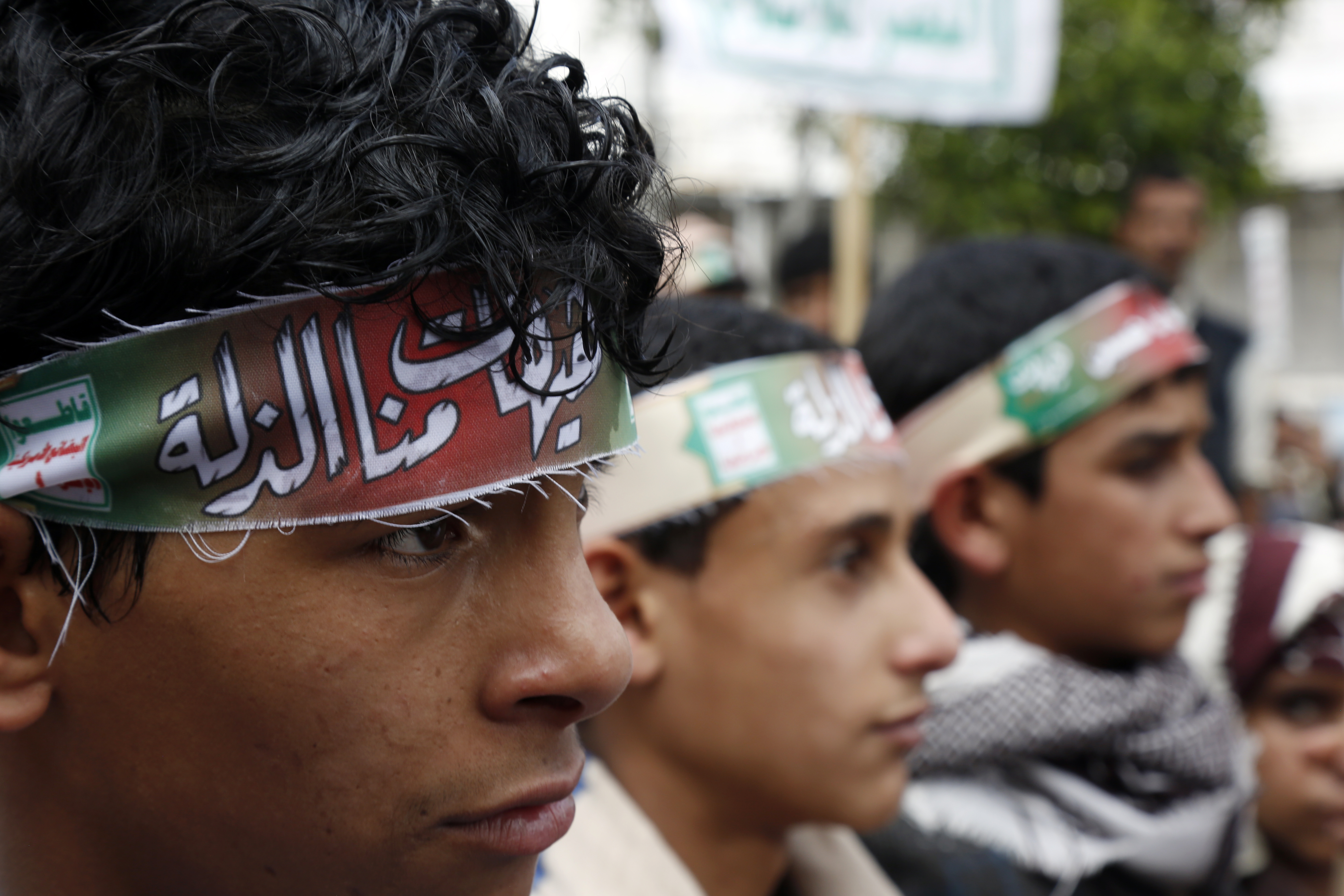
The Houthis’ ideological dogma and legacy
Although the Houthis’ war has frequently been explained in sectarian terms, the group’s mission to restore the Zaydi dynasty, which controlled Yemen for almost a thousand years, was the initial driver for their movement. The Zaydi Imamate was a theocracy established in 896 CE, and during its rule, Zaydism gradually become the dominant sect in the north of the country. The imamate rule has been largely defined as regressive and cruel. From 1904 to 1962, Imam Yahya Muhammad Hamid ed-Din and his son, Imam Ahmed bin Yahya, blocked any modernization of the state, keeping it isolated from the rest of the world until its system was overthrown in a revolution in 1962. With the fall of the Zaydi theocracy, Yemenis adopted a more pluralistic form of governance, opening up their country to both modernization and democratization.
Although the relationship between the Zaydis and Saudis was generally calm,1 the Saudi influence trickled down into their area through their funding of the Salafi institute of Dammaj, which led to an increasing conversion rate of Zaydis to Sunnism and a start of a theological Zaydi revival movement to preserve the faith, led by Hussein Badr al-Din al-Houthi and Mohammed Ezzan. On the political front, the Zaydis were not excluded from power per se — indeed, President Saleh was himself Zaydi. They also formed a political party and achieved representation in the parliament through Hizb al-Haq (party of the truth) in 1990. However, a small group of Zaydi elites who lost their influence became preoccupied with restoring their system of governance and sought to replicate the 1979 Iranian revolution experience.2 Thus, in the following two decades, Iran’s soft power grew within the Zaydi community in the north via education and cultural exchange to Tehran.3 And in this period, some of Yemen’s Zaydi families began planning a counterrevolution, the roots of which can be traced back to the Sa’dah wars, in which the Houthis fought six conflicts against the Yemeni military between 2004 and 2010.
Today, the Houthis’ ideological dogma is recognized as elitist as it presupposes the exclusive right of Zaydis to govern Yemen. According to a narrow branch of the Zaydi sect known as Jaroudism, only a ruler descended from the Prophet Muhammad — those commonly known in Yemen as Ahl al-Bayt (“People of the House”) — can preside over an Islamic nation’s affairs. Many families in Yemen, whether Sunni or Zaydi, claim to be of the Prophet’s bloodline and are referred to as Sada or Ashraf, or Hashemites. Although respected for their lineage, the Zaydis’ claim of exclusive power is contested by most Yemenis, who find it irreconcilable with the spirit of Yemen’s republican political system and the National Dialogue process. A manifestation of this exclusionary ideology can be seen in the sacking of meritorious Yemenis from government positions and the appointment of a Hashemite network in prestigious roles in state institutions shortly after the Houthis seized Sana’a. Throughout the conflict, Houthi directives to allocate 20% of resources from Yemen’s extractive industries to Ahl al-Baytwere (the descendants of the Prophet) were widely seen as a flagrant attempt to institutionalize and normalize elitist corruption in a fragile country riddled with poverty.
Another fundamental aspect of the Houthis’ war that hampers the peace process is their effort to change society through their strict ideology. The Houthis are working hard to leave a solid legacy to ensure their collective survival as a unit should a political settlement be reached. For example, Yemenis have reported being taken from their jobs to attend religious workshops in which they are taught about the Zaydi faith and the Houthis’ moral leadership. They were ushered into buses from their workplace without notice and given no choice. The same workshops and training camps are also compulsory for child soldiers, who, alongside their military training, receive cultural instruction as well. Houthis call this practice “cultural education” and impose it regularly as a way to deepen their practice and normalize their dogma.
Through peer pressure or willingly, parents send their kids (aged 7 to 18) to Houthi summer camps held in mosques and schools, mainly in Sa’dah and other territories under the movement’s control. Boys and girls participate in these events in segregated spaces where repeating violent slogans like “Death to America” is as common as singing the national anthem. Additionally, Houthis have targeted Baha’is, Christians, and Jews and restricted the freedoms of Sunni Muslims.4 The narrow view of the world propagated by such doctrinal teaching skews these young students’ perspectives.
Reconciling this radical ideological drive with the spirit of a fair political settlement will be challenging. While Houthis can work with other Yemenis from different faiths and sects and are respected for honoring their commitments to their loyalists, whether Zaydis or not, the decision-making process remains in the hands of the leadership of their movement, which is bound to create a sense of inequality among Houthi followers sooner or later. For the time being, with power firmly in the Houthis’ hands, a political settlement will fail to reach an agreement on this issue unless the Houthis agree to restructure their political system and separate it from their ideological beliefs. The unequal distribution of political power will only continue the cycle of conflict in the country.
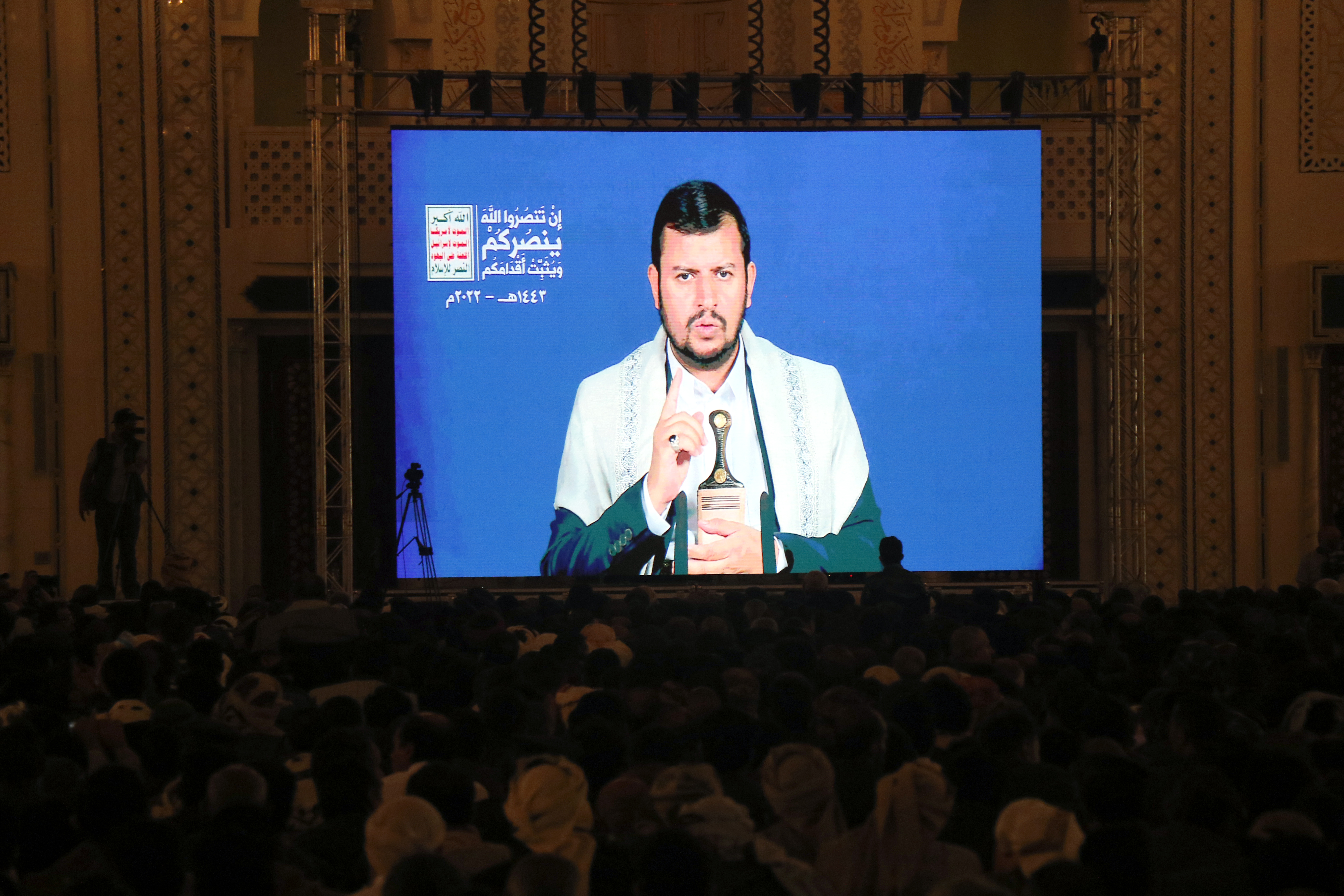
Increased alignment with Iran
Although the historical context and Houthi grievances are important to understand, they are not the sole drivers of the Houthis’ war. As explained above, shared interests between the Houthis and Iran resulted in a more streamlined objective that empowered the Yemeni movement. Iran’s ability to offer and dramatically boost its assistance was the result of a decades-long effort in cultivating cultural, intellectual, and ideological ties with Yemen’s Zaydi community. Most particularly, the founder of the movement, Hussein al-Houthi, adopted an ideology that separated him from all modern Zaydis upon his return from a brief stay in Iran. The Houthi movement today, which rebranded itself as Ansarallah (partisans of God), adopted the Khomeinist slogan “God is great, death to the U.S., death to Israel, curse the Jews, and victory for Islam” as its own, seeking to maximize its influence as an actor that can purportedly stand against U.S. imperialism in the Muslim world.
And while Houthis depict themselves domestically as a force for national liberation, their movement is vital to the transnational “Axis of Resistance” — an unofficial alliance of Iran-led or -backed militant forces spanning Yemen, Syria, Iraq, Palestine, and Lebanon. That military coordination predated the Houthis’ current war, as evidenced by Hezbollah’s military intervention and assistance in 2013 (during Yemen’s transition process), which helped the Houthis maintain a siege of the Salafi religious institute of Dammaj in Sa’dah and carry out several attacks on the border of Saudi Arabia. In addition, Abdel-Malik al-Houthi, the current “supreme leader” of the movement, has been clearly inspired by Hezbollah chief Hassan Nasrallah: he has used noticeably similar rhetoric in his speeches, railing against the global threat posed by “Americanism and Zionism” as well as Arab Gulf States’ “complicity with the West.” Houthi officials have also been active in organizing national fundraiser events to collect money for Hezbollah as a way to help “pay back” the Lebanese group for its “support.”
The Houthis have become increasingly crucial for Iran as tensions with the United States worsened during the former Trump administration over the future of the 2015 Iran nuclear deal. Houthi forces claimed credit for various attacks that, at times, coincided perfectly with the U.S.’s imposition of additional sanctions on Iran. One of the earliest such instances occurred just a week after the U.S. adopted a sanctions package targeting Iran and dispatched an aircraft carrier group to the region: on May 13, 2018, four oil tankers were sabotaged off the coast of the United Arab Emirates, near the Emirati port of Fujairah. Although the U.S. initially blamed Iran for the attack, the Houthis claimed credit, just as they did a year later for a drone attack on Saudi oil infrastructure that U.S. intelligence identified as having originated in Iraq. Similarly, attacks on Abha and Jizan airports in the kingdom spiked as tensions between Iran and the U.S. increased. Iran has, thus, leveraged the Houthis on many occasions, showcasing its ability to destabilize the Arabian Peninsula and threaten global energy markets.
The smuggling of weapons from Iran has also been a problem despite the multiple embargoes. In February and May 2021, the U.S. Navy seized two cargoes of weapons in the Arabian Sea that included significant quantities of small arms and light weapons as well as container-launched and wire-guided anti-tank missiles, among other equipment. Moreover, a 2019 U.N. Panel of Experts investigation on Yemen found that Iran continues to fund Houthi operations through the smuggling of oil, which has sustained the Houthis’ influence and prolonged the war.
That said, at the beginning of the current Yemeni conflict, Iran’s role was somewhat underplayed by Western diplomats and academics, mainly due to concerns that the Houthis’ opponents were exaggerating Tehran’s involvement, but also because shining a negative light on Iran’s role in the Yemeni war would likely have complicated the prospects of signing the nuclear deal in 2015. Tehran vehemently denied backing the group for years, but mounting evidence and increasing awareness of both Iran’s motivation and the Houthis’ actions have underscored how difficult it will be to achieve peace in Yemen without Iran’s cooperation. And given the low stakes that the Yemeni conflict presents for Iran, Tehran’s interest in supporting the Houthis has been growing. In particular, the Houthis have proven to be an especially convenient proxy since trying to leverage groups like Hezbollah or the Hashd al-Shaabi (or Popular Mobilization Forces) in Iraq would have brought those Iranian-backed forces into direct conflict with the American military in the region, quickly escalating the situation and costing Iran its hard-fought gains in Iraq and Syria. In contrast, because the U.S. has no presence in Yemen, the Houthis did not hesitate to take credit for the May 14, 2019, drone attack on Saudi oil facilities as they did not fear any direct retaliation from American forces.
When it comes to Yemen, Hezbollah and Iran have demonstrated that they are patient and willing to play the long game. This strategy has paid dividends throughout the current civil war. At this stage of the conflict, it is futile to expect that the Houthis will abandon Iran or vice versa. While the U.N. Special Envoy to Yemen Hans Grundberg conducted multiple visits to Tehran since his appointment, it is less likely that there will be any change in Iran’s position without international pressure that would incentivize Iran to push the Houthis toward a political settlement. If Tehran’s weaponization of the Houthis persists without consequences, that will continue to be an obstacle to any future negotiated political settlement in Yemen.
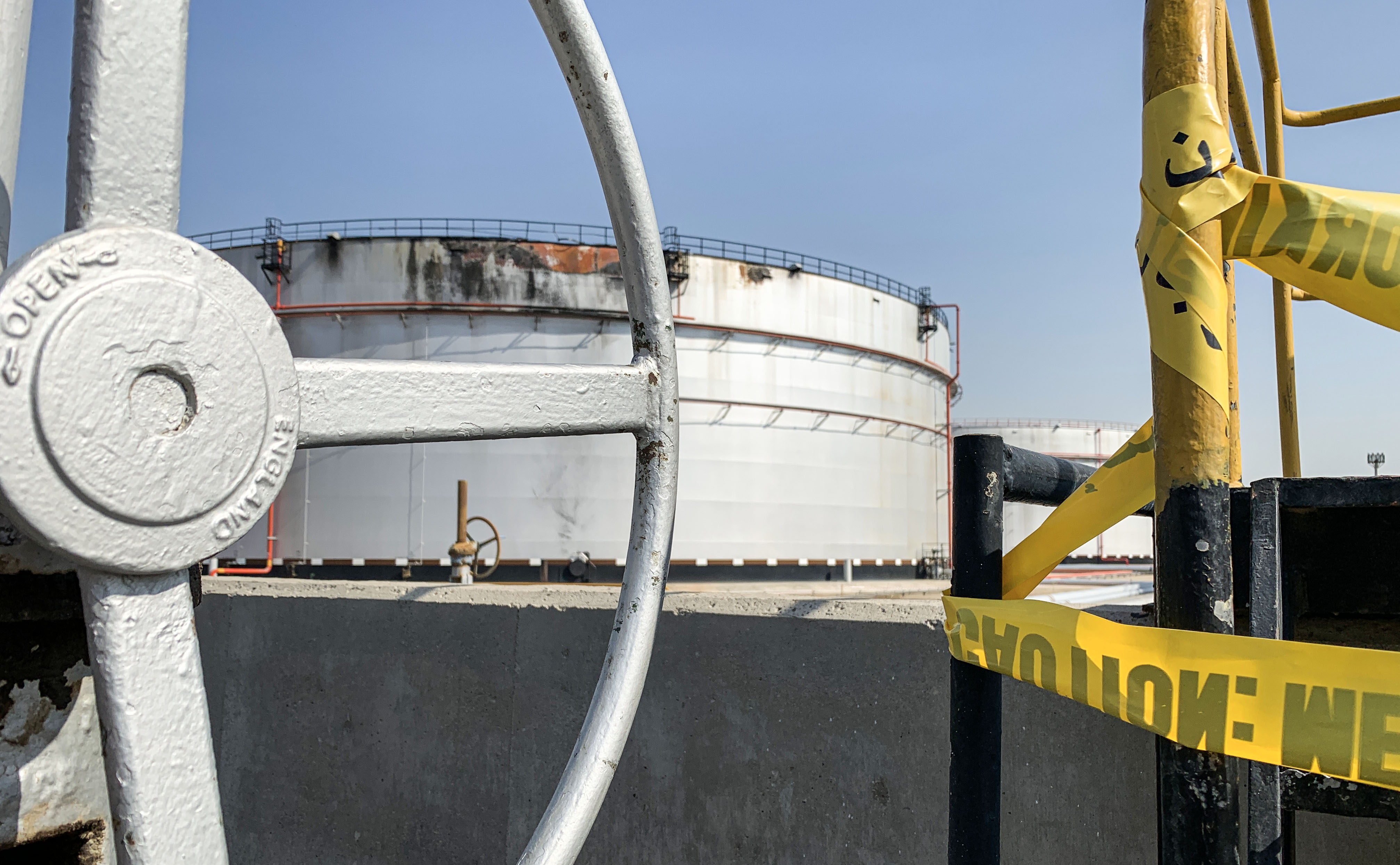
The Houthis’ heavy weaponry
A Yemeni political settlement representing the interests of all sides will not be fair or effective without addressing the Houthis’ powerful military arsenal and capabilities, which far surpasses those of their local opponents. The Houthis’ attack on the UAE earlier this year demonstrated the recklessness of the militia that chose to retaliate regionally for its losses of Yemeni territory domestically. This ability to command such weapons should not be left unsanctioned, especially as the Houthis claim greater ability to manufacture them or put the components of these weapons together. According to the January 2022 U.N. Panel of Experts on Yemen report, the Houthis have employed sophisticated weapons, including cruise, anti-ship, and surface-to-air missiles comparable to those manufactured in Iran. By the time their alliance with President Saleh ended in 2017, the Houthi arsenal had grown exponentially to include waterborne improvised explosive devices (IEDs), anti-ship cruise missiles, anti-tank guided missiles, and ballistic missiles. A year later, the Houthis were deploying “extended-range unmanned aerial vehicles” manufactured with imported “high-value components,” threatening that these weapons would allow their forces to strike targets deep into Saudi Arabia and the UAE.
While the Houthis seized some of these weapons from the Yemeni army at the beginning of the conflict, many of their newer weapon systems, including drones and new models of cruise missiles, had not been seen in Yemen before 2019. The U.N. also reported that the Houthi drone, the Qasef-1, has “characteristics similar to Iranian-made Ababil-2/T” and has identified Iranian shell companies that were illegally sending fuel to Yemen, where it was subsequently sold to fund the Houthi war effort.
Moreover, the Houthis have held two military parades in Hodeida and Sana’a to commemorate the anniversary of their war and showcase their strength. This is an especially worrying message at a time when the Saudi-led coalition and Yemen’s government agreed to de-escalate and consider future talks.
In any case, from a military standpoint, no victory can be achieved in the conflict without jeopardizing the lives of civilians. On the battlefield, it has proven difficult to suppress the Houthis, who are ruthless in recruiting civil servants and children, with or without their consent, to fight this war at any cost. Growing poverty, increasing grievance, and aggressive recruitment measures provide the Houthis with a near-limitless pool of recruits, which makes it difficult to end this war by military means. The Houthis’ arsenals and fighting forces will need to be phased out to a reasonable degree to prevent them from threatening other parts of Yemen.
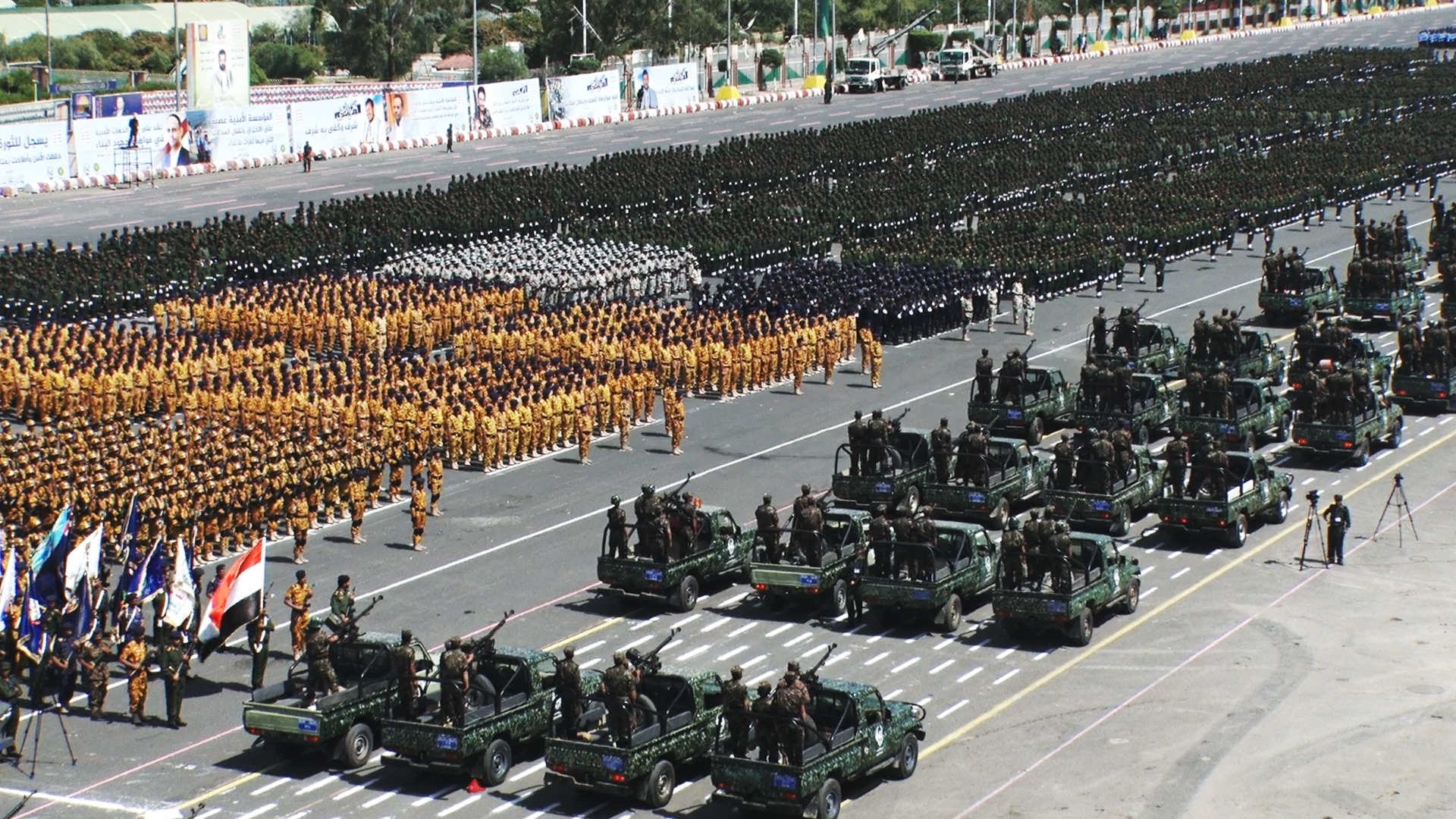
Conclusions and recommendations
The Houthis’ war has grave repercussions for Yemen’s economic, political, and cultural spheres. It also presents a dilemma for diplomats and mediators, who so far have been unable to make meaningful progress in the peace process. Although the internationally recognized Yemeni government and the Saudi-led coalition are both complying with the truce that was renewed most recently on Aug. 2, the U.N. faces the challenge of compelling the Houthis to fulfill their side of the agreement, which is supposed to include opening the roads in Taiz Governorate. The U.N. special envoy, Hans Grundberg, has directed his attention to a limited set of initiatives to build confidence among the warring parties. However, considering the Houthis’ track record of noncompliance and their lack of incentive to share power, assumptions that a breakthrough in the peace process could be near are far-fetched.
Under these circumstances, the burden falls on Yemeni political parties and the opposition to draw up a plan that would ensure that any power-sharing arrangement respects the rights of all equally and does not threaten the Houthis’ political or religious ideology — so long as that ideology is not imposed on the rest of society. But the U.N. must ensure the Houthi security threat is neutralized for both their opponents and the region.
After eight years of Houthi control over most northern areas of the country, it has become increasingly clear that isolating the movement has inadvertently helped increase its power. The Houthis’ ability to survive in an economy of violence and corruption, wherein they benefit from confiscating state resources, collecting taxes from the business sector, and embezzling humanitarian aid, has helped them become self-sufficient. It has also allowed them to avoid responsibility for the people under their control and to impose their ideology by force. Attempts to further isolate or weaken the movement through military means will only end up having the opposite effect.
For an effective and fair settlement, the United Nations must first ensure that these issues outlined above, which have long been considered difficult to negotiate, are part and parcel of any upcoming agreement. Increased transparency and discussions on the future of Yemen, given the rapidly changing culture, is paramount to a successful peace process. Alongside these issues, discussions on a political settlement must guarantee religious freedom for all Yemeni citizens, including the Houthis’ religious and political freedom, as long as it does not negatively impact the rest of the society. It must also include a plan to phase out militia recruitment and heavy weapons (including drones and guided missiles), focusing on specialized security forces and local community protection. Finally, mechanisms should be put in place to deal with any breaches of regional security that will not jeopardize Yemeni or other Gulf countries’ citizens and entangle the region in a new war in Yemen.
To avoid falling into a pattern whereby the Houthis become accustomed to having a monopoly on violence, the international community should pay attention to the issue of governance and power-sharing by holding the militia accountable for its commitments during the conflict. Waiting until after the conflict or a political settlement to hold the Houthis accountable for violations or wrong-doings in their areas of control only gives them carte blanche to perpetuate the status quo.
Fatima Abo Alasrar is a Non-Resident Scholar at the Middle East Institute and a Senior Analyst with the Washington Center for Yemeni Studies. The views expressed in this article are her own.
Additional photo by MOHAMMED HUWAIS/AFP via Getty Images.
Endnotes
1 Some of the Zaydi royalty fled to Saudi Arabia, which had fought on their side for eight years
2 Hussein al-Houthi lived in Iran for a brief time in the 1990s (his father was also reported to have lived there). Exposure to the Islamic Republic and its revolution inspired al-Houthi, who saw a model he could emulate in Yemen: a revolutionary and independent theocratic power capable of defying the U.S. imperial order and achieving global recognition.
3 Mohammed Izzan, a leading Zaydi scholar and a cofounder, with Hussein al-Houthi, of the Believing Youth Movement, has documented Iran’s efforts and outreach to the Zaydi community at length. According to Izzan, in the 1980s and 1990s, the Islamic Republic dispatched Khomeinist scholars to North Yemen and paid for Yemeni Zaydi religious students to study in its religious institute in Qom. While in Iran, many of these students adopted Khomeinist ideas. See: “Muhammad Azzan: Al-Houthi directed the path of the ‘believing youth’ to an extremist project,” Alameenpress.net, 2019.
4 In September 2021, the U.S. Commission on International Religious Freedom (USCIRF) recommended the State Department re-designate the Houthis as an “Entity of Particular Concern” (EPC) due to their “systematic, ongoing, and egregious religious freedom violations.” The USCIRF report cites cases of armed Houthi militants continuing to violate the religious freedoms of non-Zaydis.
The Middle East Institute (MEI) is an independent, non-partisan, non-for-profit, educational organization. It does not engage in advocacy and its scholars’ opinions are their own. MEI welcomes financial donations, but retains sole editorial control over its work and its publications reflect only the authors’ views. For a listing of MEI donors, please click here.













